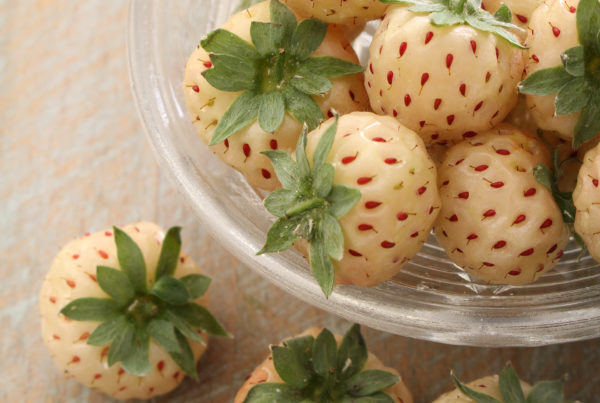
The white strawberry that tastes like pineapple. Perfect for eating fresh.
Origin
When we think of strawberries we usually imagine them red, but there’s a one type that stands out because of its snow-white color, and it’s completely natural. Pineberries are an albino variety that belong to the genus Fragaria. They are also known as albino strawberries, white strawberries or pineapple strawberries. This last one is where it gets the name ‘pineberry’, as a cross between pineapple and strawberry. They are originally from South America, but it’s said that the French botanist Antoine Nicolas Duchesne crossbred wild varieties to obtain larger, juicier white strawberries. They are almost completely white except for their ruby colored seeds, and have a taste very similar to pineapple. Depending on the climate and cultivation, they may actually have a slightly pink or purple hue. They are not very widespread in Italy, and in fact were at risk of extinction in the first half of the 1900s. But they have rebounded thanks to the work of several Dutch farmers, and since 2010 have found renewed vigor in fruit markets.
In the kitchen
Pineberries are higher in calories on average than other varieties of strawberry due to their higher carbohydrate content: about 30mg per 100g, for 120kcal in total. They are rich in vitamin C and several minerals, and are easy to digest. As with other strawberries, you can eat them raw, in a fruit salad or as an ingredient in sweets and jams. When pairing this fruit, consider that its flavor is similar to pineapple, so it works well with savory dishes as well. They are often used during the winter and leading up to Christmas, since their coloring makes for an enchanting dish.
Did You Know That?
They’re rare in Italy but are more common in the UK and the US, while in Japan pineberries are an true agricultural jewel. The most highly prized variety is the White Jewel, which is particularly light and refined. They are sold in packs of 7-8 pieces for $40, or individually for about $10 each. Besides their high price, it’s also very difficult to track them down. In all of Japan, there’s only one farmer, Yasuhito Teshima, who grows them. They require an enormous amount of care and have a very low yield because they need to be flawless. Only one in ten actually makes the final cut and reaches store shelves.






